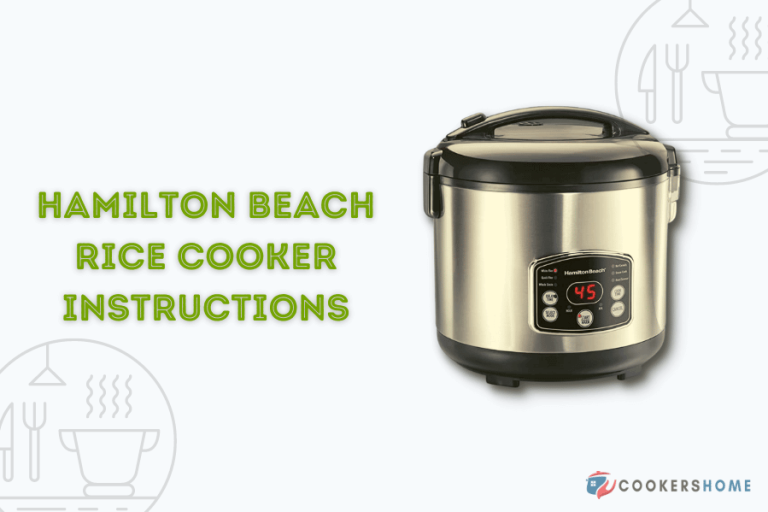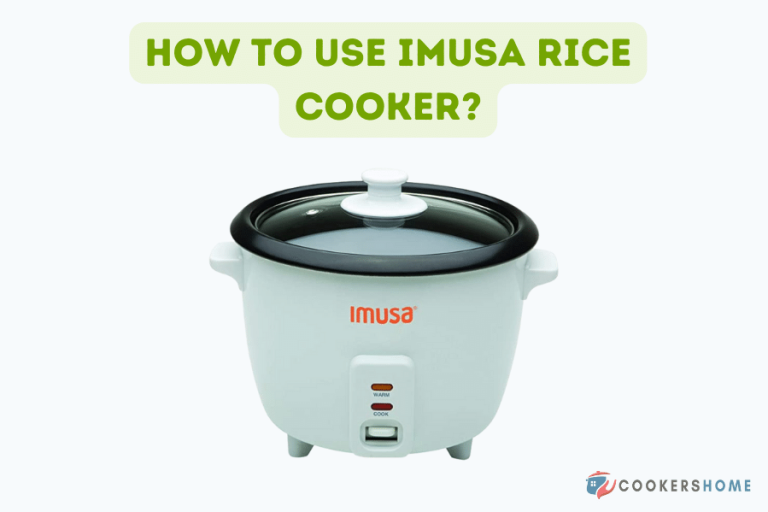Panasonic Rice Cooker Instructions: A Comprehensive Guide

Rice cookers had made their way into the world of pottery. They now come in different brands and types because their convenience and consistency in preparing the staple food is great. Like Cuckoo or Zojirushi rice cookers, Panasonic has also become a leading brand in this domain.
Panasonic offers a range of models that cater to various cooking needs. I am a rice cooker expert; my duty is to test and review different models of rice cookers to help the viewers make better choices. I also bought a Panasonic rice cooker in 2016 and using it till now.
Today, I will share my little review of the Panasonic rice cooker, its rice cooking instructions, and a few tips to make the most out of the appliance. So, let’s begin!
Table of Contents
Panasonic Rice Cooker Review
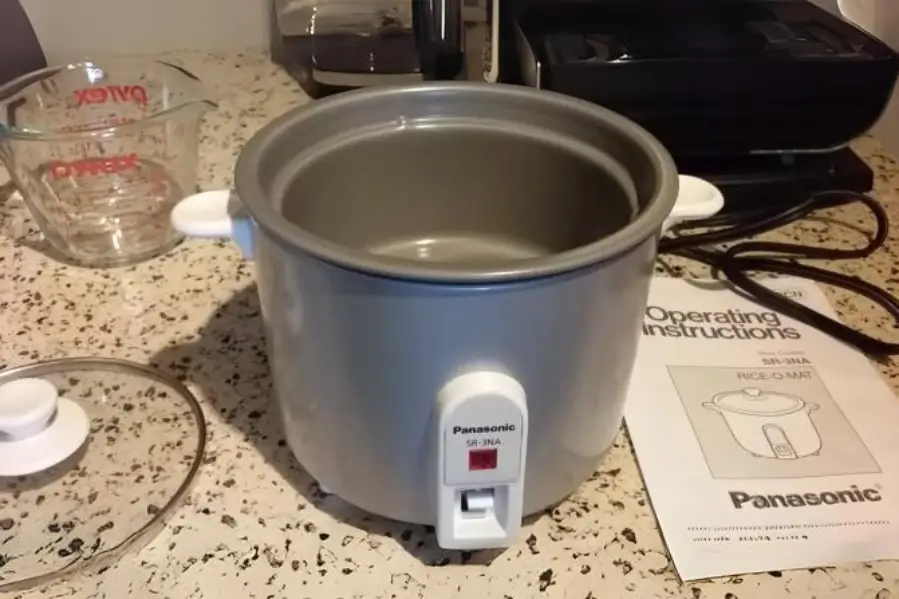
I bought a Panasonic rice cooker model: SR-3NA. It is 200 watts and perfect for singles, couples, or college students due to its compact size. It can cook up to three cups of cooked rice (1.5 cups dry). The cooker features a clear glass lid without a vent hole.
Its cooking vessels are non-stick and very smooth. Nothing sticks to it, and it is very easy to clean. This Panasonic rice cooker operates with a single switch and does not have a ‘keep warm’ function.
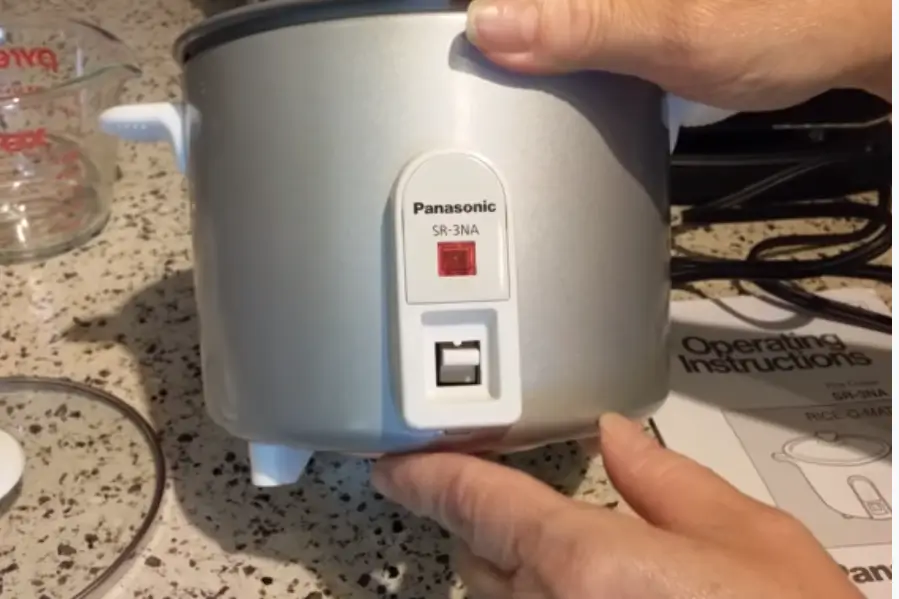
The cooking process in this rice cooker is simple: ingredients and water are added, the lid is closed, and the switch is flipped down. When cooking is complete, the cooker turns off automatically. The rice cooker is priced between $35 and $48 online, though I personally purchased it for a significantly lower price on eBay.
How to Use Panasonic Rice Cooker? Step-by-step Instructions
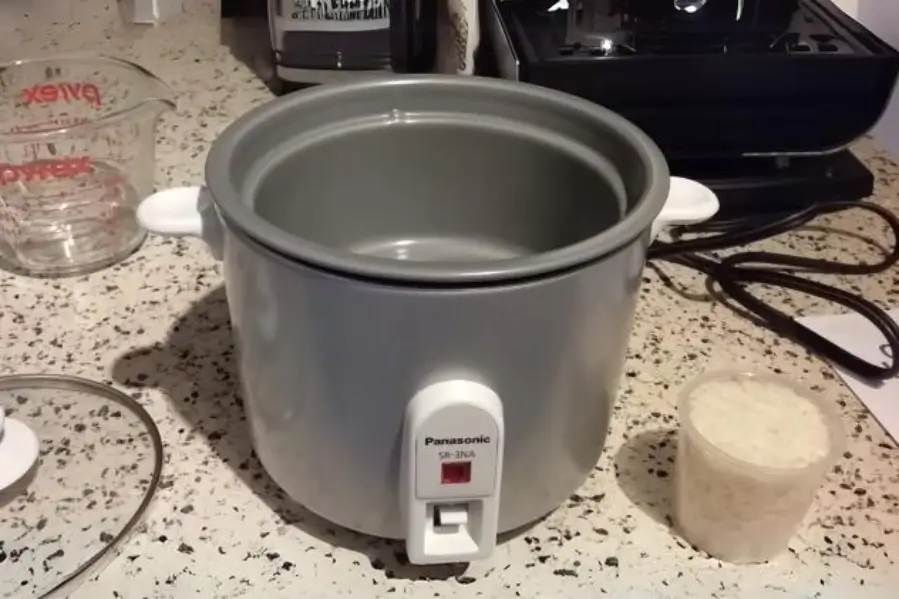
Now, when it comes to using Panasonic rice cookers, it is typically the same as other rice cookers like Aroma or Zojirushi rice cookers. Panasonic rice cooker Instructions are given below:
- Measure the Rice: Use the measuring cup provided with the rice cooker. This cup measures a quarter cup of rice. You can put a maximum of three of these cups in the cooker.
- Water-to-Rice Ratio: The water-to-rice ratio is crucial. For this model, the ratio is two of the small rice cups to two and two-thirds cups of water. This ratio can vary depending on the type of rice you’re cooking. For example, brown rice usually requires more water and takes a longer cooking time than white rice.
- Rinsing the Rice: Before cooking, rinse the rice.
- Adding Water: After rinsing the rice, add it to the cooker. Then, add the corresponding amount of water. For two cups of rice, add two to two and two-thirds cups of water. I use only two cups of water for jasmine rice, which is slightly softer and stickier.
- Adding Salt: Optionally, you can add a pinch of salt for flavour.
- Cooking the Rice: Place the lid on the cooker and turn it on. The cooking process will start.
- Waiting for Completion: Once the rice cooker finishes cooking, it will turn off automatically.
- Steaming the Rice: After the cooker turns off, leave the lid on for an additional 15 minutes to allow the rice to steam. This step helps to improve the texture of the rice.
- Serving the Rice: After steaming, the rice should be fluffy and well-cooked. You can then serve it as desired.
However, one thing I note in the instruction manual is that it doesn’t specify cooking times for different types of rice.
Troubleshooting Common Issues
This section addresses common problems users may encounter, such as technical glitches or cooking mishaps, offering practical solutions and tips to ensure a smooth cooking experience.
| Issue | Possible Cause | Solution |
|---|---|---|
| Rice not fluffy | Incorrect price or water quantity | Check the correct ratio |
| Boil over | Grease added to rice | Avoid adding grease |
| Rice too hard | Rice is not fully washed | Properly rinse rice |
| Dew condensation | Rice does not loosen after cooking | Fluff the rice |
| Rice too soft | The Pan bottom is set uneven | Ensure the pan is set correctly |
| Rice smells strange | The outer lid is not closed | Close the lid firmly |
| Scorching smell | Moisturizing cap incorrect placement | Install cap properly |
| Rice color changes | Foreign objects present on the sensor | Remove debris |
Maintenance and Care
This part emphasizes the importance of regular cleaning and long-term maintenance of the rice cooker, providing detailed instructions to prolong the appliance’s life and ensure its optimal performance.
Creative Cooking with Your Panasonic Rice Cooker
Your Panasonic cooker can prepare more than rice. You can try different recipes in it. Some suggestions are given below:
Challenge yourself with weekly recipes to test the limits of what your rice cooker can do. Share your creations with Us!
Conclusion
In summary, the Panasonic rice cooker is a valuable addition to any kitchen. It offers simplicity, reliability, and the potential for culinary exploration. With proper care and a willingness to experiment, this appliance goes beyond its role as a rice cooker. It will become your versatile ally in your quest for easy and fun home cooking.
